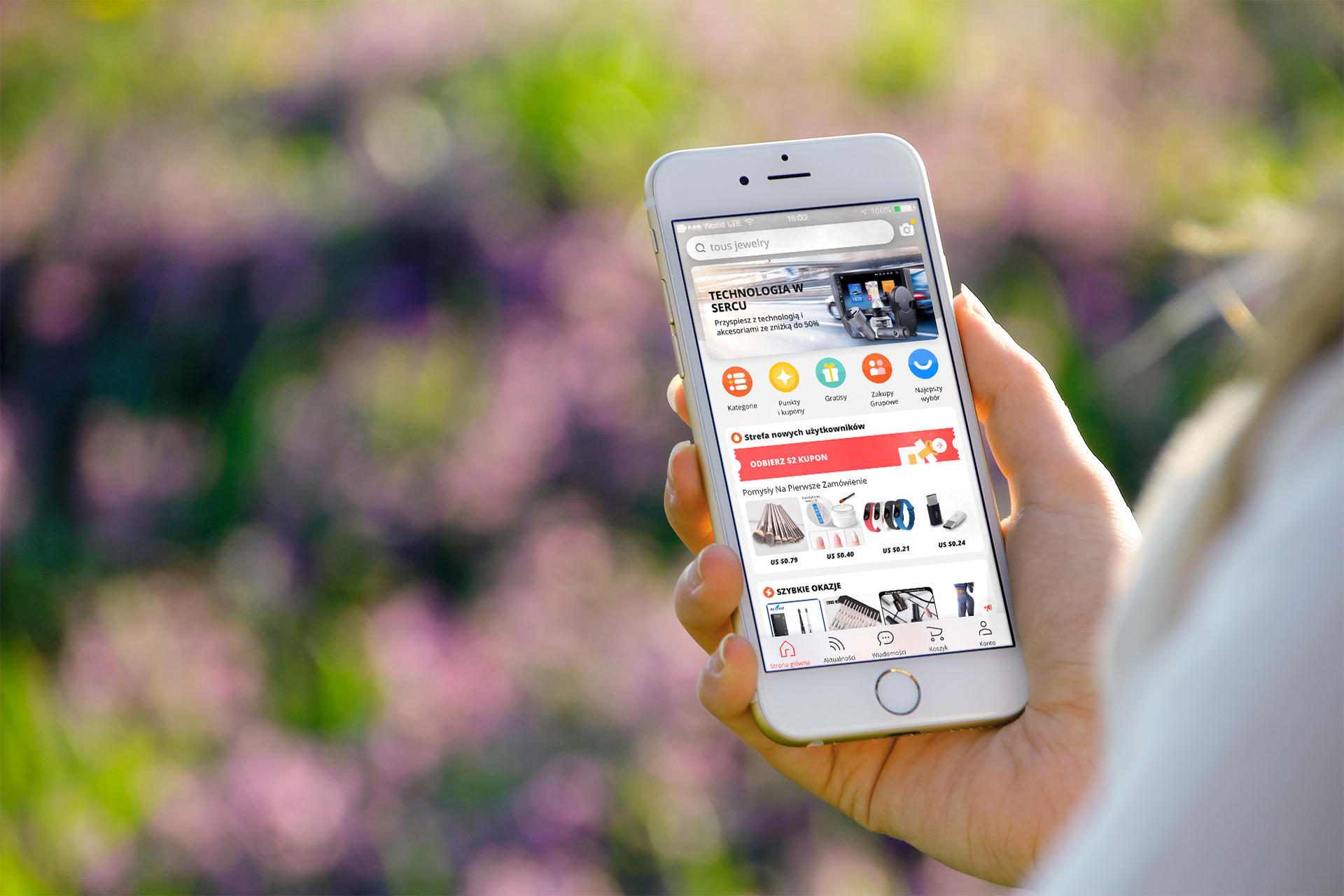PWA Checklist & Best Practices – Progressive Web App Requirements
No wonder the concept of writing one app to run on all platforms and is managed by one common code is...

In today’s article, we’ll look at the leaders of several industries and see how they have benefited from implementing PWA versions of their services. The benefits of PWAs! No better choice when it comes to targeting mobile traffic. You can expect outstanding results, especially if you know how to do a PWA right.
Let’s take a look at some rockstar examples in these areas:
1.Retail
2.New Media
3.Travel
4.Lifestyle
What makes PWA world-class? Well, its’ unrivaled flexibility allows us to create extraordinary solutions regardless of the industry. After all, everyone loves being the best, right? We’ve carefully selected a handful of examples to present a nice and varied flavor of how PWA can set your app apart. Sit back, relax and learn from the best!
Probably no need to introduce that one. This Chinese retail giant only continues to gain momentum, following their motto ‘smarter shopping, better living. For AliExpress, smarter shopping translates into the unrivaled mobile experience, as their mobile division is growing three times faster than ‘old-school’ e-commerce. The challenge, however, was that shoppers were not that eager to download the app and then re-engage with it. The company ended up throwing money down the drain without significant results, despite the effort. Eventually, they decided to go cross-platform with a PWA development.
AliExpress didn’t have to wait long to see promising results: the number of pages visited per browsing session doubled, time spent per session increased by 74%, and the new-user conversion rate went through the roof, more than doubling. Today, AliExpress is a model example of immense PWA success, setting a new mobile user experience standard.
Lijun Chen, director of the Mobile Team at AliExpress, says:
“One of the reasons we built a Progressive Web App was to be able to invest in the web experience across all browsers. Not only did we see huge benefits on browsers that support the latest features, but we also got to see a bump across the board. That is the sign of a great investment, and one that will keep paying for itself as browsers evolve.”
What an example to follow!

AliExpress is an online retail service based in China that the Alibaba Group owns. There are over 150 mln users in 230 different countries and regions!
Thinking about global retail companies, Starbucks would usually be a top-of-mind example of a highly developed, ubiquitous corporation. Targeting both constantly on the go, mobile-first customers in the biggest agglomerations globally, and newcomers from rather remote and rural locations with a poor internet connection, Starbucks decided to develop a PWA to kill two birds with one stone.
They managed to achieve a smooth, native-like experience of animations, high performance, and partial geo-personalization when online while using caching to its maximum and minimizing the solution’s size to 233 kilobytes. That’s 99,84% smaller than the native iOS app! Now, customers can customize orders and add items to carts even offline.
Imagine having more than 328 million active users each month, 80% of them consuming, creating, and sharing mobile devices. Focus on a great, fast, reliable, and engaging user experience is the only way to maintain (and grow!) this crowd. It sounds like a task for a PWA!
Twitter Lite app was not only well-received but also very successful. It managed to limit the size of storage space to 3% of what was required for native Android while hitting more than 1 000 000 push notifications every day! More stats? There you go: 250 000 users engaging with the PWA at least four times per day, 75% increase in Tweets sent, 20% decrease in bounce rate, 70% scroll extension, 65% increase in pages per session.
Twitter knows how to do a PWA, don’t they? That’s the summary of the Engineering Lead for Twitter Lite, Nicolas Gallagher: “Twitter Lite is now the fastest, least expensive, and most reliable way to use Twitter.”
Hitting the nail in the head, Mr. Gallagher!

Do you know that Twitter was almost called… “Friendstalker”? Luckily the owners figured out it might be a little bit creepy!
From time to time, every company comes to the point when they decide they need “something different.” For Forbes, an American business biweekly, it was the 100th anniversary of the magazine’s establishment. They understood that a modern audience consumes news mostly on mobile devices and expects a very different experience than pre-internet newsreaders.
That’s why they went for a PWA, which brought them brilliant results, namely: website loading time decreased to below one second (stunning, compared to frustrating up to 10 seconds before), sessions per user increased by 43%, scroll depth tripled, session duration went up by 100%, bringing a significant increase in revenue from advertisements. Forbes’s PWA promoted modern, highly consumable, visual content, creating a whole new mobile experience for once an old-fashioned business.
Uber is another great example of continuous global expansion that quickly reached the ceiling of harnessing native mobile applications. In fact, Uber was one of the early commercial PWA adopters, targeting low-end mobile devices. The reasoning was simple – no hardware should limit users in engaging with ride-hailing.
Uber works smoothly even on 2G (250kB/s, 300 ms latency) networks and requires as little as 50 kilobytes of storage space for operations, loading in less than 3 seconds. That’s how you increase the pool of potential app users!

Today, Uber offers peer-to-peer ridesharing and ride service hailing, food delivery, and a bicycle-sharing system. It has a 69% market share in the United States for passenger transport and a 25% market share for food delivery.
Hotel? Trivago. App? A PWA! The travel industry is another sector disrupted heavily by emerging technologies and the internet boom. Nevertheless, one of the most popular hotel search engines managed to stay ahead of the curve, as they went for a Progressive Web App. The challenge was to enhance the user experience, which often is influenced by network connection speed. No better source of frustration than a failed search or broken session – been there, done that, haven’t we all?
Trivago is well aware that user loyalty comes with the service’s quality, so they introduced a widely available solution, including all must- and nice-to-haves. As a result, Trivago experienced a 150% increase in revisits and an almost 100% increase in click-throughs to hotel offers.
Here’s a great summary by Trivago’s co-founder and Managing Director, Rolf Schrömgens:
“At trivago, we have been always proud of how fast we are growing, and how fast we are learning. And with all these new technologies evolving, we want to be among the first to make use of their potential and bring our mission to even more people.”
Great mobile solutions and PWA – sounds like it’s a match! Tinder’s Progressive Web App maintains core functionalities and experiences at a space of only 2,8 MB, compared to 30 MB of Android native app. Moreover, Tinder PWA translated directly into increased user activity. It turns out that PWA users swipe more, the message more, edit profiles and spend more time using the app, compared to native solutions. For Tinder, utilizing JavaScript for performance optimization, Service Workers for enhanced network resilience, and push notifications for chat engagement, brought outstanding results. Way to go!
Pinterest users share with the world whatever they currently feel like. But to really go global, the company needed to overcome the challenge of poor web experience, which led to an unsatisfying 1% conversion rate. To properly open for the mobile web, Pinterest developed a great PWA, which immediately resulted in increasing the time spent by 40%, upping core engagements by 60%, and boosting user-generated ad revenue by almost 45%, at the same time cutting loading time from frustrating 23 seconds to a neat 6. That’s what we call an improved user experience!

Do you know that Pinterest is one of the fastest-growing websites by overall member growth?
As presented in the high-profile success examples above, PWA is a remarkable technology piece that brings outstanding benefits to the business. What’s awesome is that Progressive Web Apps are brilliant regardless of the sector or industry – users of all kinds enjoy increased usability, faster and more reliable performance, and an overall increase in engagement.

No wonder the concept of writing one app to run on all platforms and is managed by one common code is...
When you look around a subway station during rush hours, what do you see? Likely, a crowd of commuting people keeping...
Progressive Web App is nothing more than a website or a web app that looks and behaves like a mobile application...